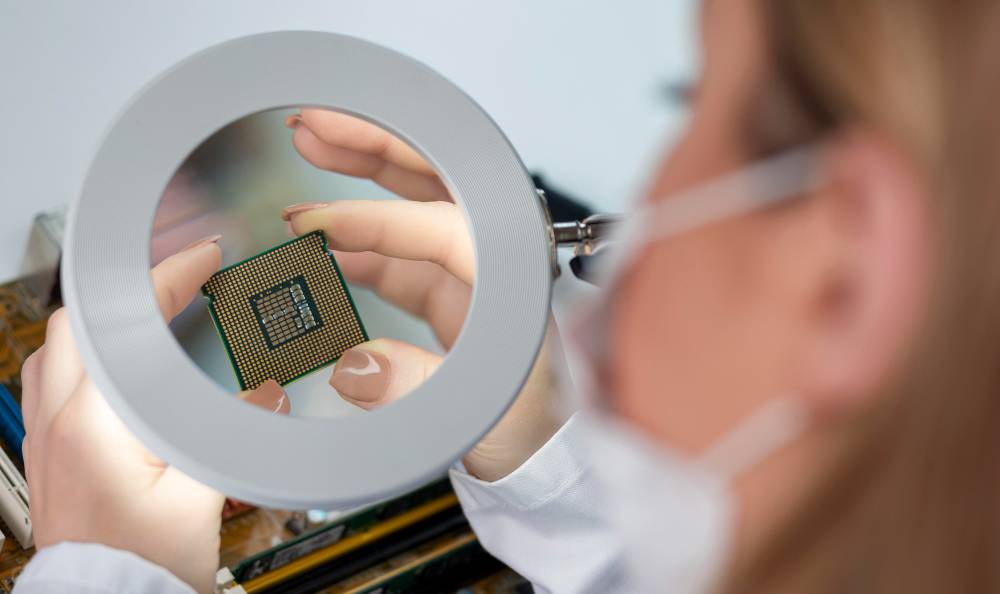The emerging field of biocomputing holds immense promise for transforming both the realms of computing and medicine. With its potential applications ranging from early detection and treatment of diseases to futuristic enhancements of human memory, biocomputing represents a groundbreaking avenue for medical research. However, conventional computer hardware has certain limitations when it comes to interacting with living organisms, which has posed significant challenges in the development of medical equipment. Unlike organic systems, computerized implants lack the ability to self-repair, require a constant source of power, and can cause scarring in soft tissue, rendering them ineffective. To overcome these constraints, biocomputing leverages biological molecules like DNA or proteins to create innovative solutions that can push the boundaries of medical technology.
Traditionally, biocomputing relies on either living cells or enzyme-free, non-living molecules. While living cells possess the advantages of self-repair and self-nourishment, manipulating them for computational purposes can be a daunting task. Yet, they have poor signal output and are challenging to manage. In contrast, non-living molecules can get around some of the problems that live cells face.
What is Trumpet?
A recent publication in Nature Communications reported that a group of scientists at the University of Minnesota had developed a new biocomputing tool, the Transcriptional RNA Universal Multi-Purpose GatE PlaTform or Trumpet. This innovative platform represents a novel approach to biocomputing, marking a significant advancement in the field of biotechnology.
Trumpet employs biological enzymes as catalysts for molecular computing. In laboratory experiments, DNA molecules are utilized to perform logic gate operations similar to those executed by traditional computers. When a positive gate connection is established, phosphorescent light is generated. Upon inspection of the circuit board, the fluorescent RNA compound illuminates, resembling the light emitted by a lightbulb, signifying the completion of the circuit.
The study’s findings revealed that the Trumpet platform merges signal amplification and programmability while retaining the straightforwardness of molecular biocomputing. It enables the encoding of all universal Boolean logic gates, namely NAND, NOT, NOR, AND, and OR, which are fundamental to programming languages, with consistent reliability. By stacking these logic gates, more intricate circuits can be developed. To simplify the process of creating sequences for the Trumpet platform, the team has developed a web-based tool.
Since the Trumpet non-living molecular platform circumvents most of the challenges that arise with live cell engineering, by doing so, it eliminates the need to overcome evolutionary obstacles that can arise when attempting to manipulate living cells into performing desired actions. Furthermore, the implementation of logic gates within the Trumpet platform significantly reduces the risk of operational errors and malfunctions that are commonly associated with live cell operations, resulting in a highly stable and reliable platform.
Designing and Running Biological Circuits
With Trumpet, designing and running biological circuits is a simple and intuitive process. The platform offers a library of genetic elements that may be easily coupled to build complex circuits, including promoters, ribosomes, and DNA-binding proteins. Next, these circuits may be designed to react to a variety of inputs, from straightforward chemical signals to subtler biological cues.
The simplicity of Trumpet’s design process is one of its key advantages. Researchers with minimal training in genetic engineering can quickly create and test new circuits, accelerating progress in biocomputing research. Moreover, the platform’s flexibility makes it simple to iterate and optimize circuit designs, allowing researchers to optimize their creations for optimal usefulness and efficiency.
Despite being in its experimental phase, Trumpet holds immense potential for enabling long-term neurological implants. The scope of its applications ranges from purely medical purposes, like mending damaged nerve connections or operating prosthetic devices, to more futuristic domains, such as entertainment, cognitive augmentation, and memory enhancement.
Researchers are utilizing the Trumpet platform to create biological applications for early cancer detection and explore the potential of theranostics, the integration of medical diagnosis and treatment within the body. An example of this is a biological circuit that can detect low insulin levels in diabetic patients and activate proteins to produce the necessary amount of insulin. These circuits can be designed to be small enough to navigate through a patient’s bloodstream, demonstrating their potential for compact, efficient medical applications.
Applications of the Trumpet
The Trumpet has a wide range of potential applications in areas such as healthcare, biomanufacturing, and environmental monitoring. The creation of diagnostic tools for conditions like cancer is one of the most promising fields of study. By creating circuits that can detect specific biomarkers associated with cancer, researchers can develop novel tools for early identification and monitoring of the disease.
Another potential application of Trumpet is in theranostics, which involves the integration of diagnostics and therapeutics within the same system. Trumpet’s ability to create circuits that respond to specific biological cues makes it an ideal platform for the development of targeted therapies. For example, a biological circuit could be designed to detect low insulin levels in diabetic patients and trigger the production of insulin as needed.
Conclusion
The Trumpet is a groundbreaking platform for cell-free biocomputing that promises to revolutionize the field of synthetic biology. By simplifying the process of designing and running biological circuits, Trumpet has the potential to accelerate progress in diverse areas, from healthcare to environmental monitoring. As scientists delve deeper into the possibilities of Trumpet, we can anticipate exciting advancements in the field of biocomputing in the future.
Article Source: Reference Paper | Reference Article
Learn More:
Dr. Tamanna Anwar is a Scientist and Co-founder of the Centre of Bioinformatics Research and Technology (CBIRT). She is a passionate bioinformatics scientist and a visionary entrepreneur. Dr. Tamanna has worked as a Young Scientist at Jawaharlal Nehru University, New Delhi. She has also worked as a Postdoctoral Fellow at the University of Saskatchewan, Canada. She has several scientific research publications in high-impact research journals. Her latest endeavor is the development of a platform that acts as a one-stop solution for all bioinformatics related information as well as developing a bioinformatics news portal to report cutting-edge bioinformatics breakthroughs.









